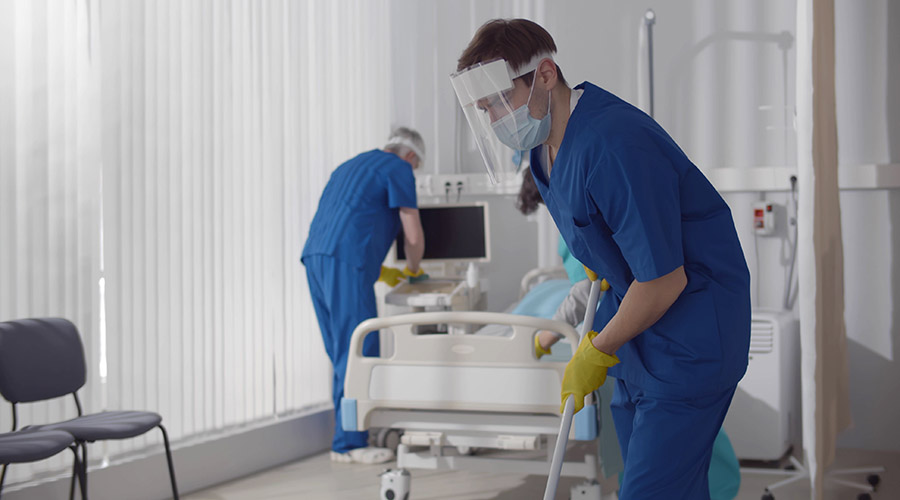Healthcare facilities have always had a unique set of requirements needed for patient care. During the past year these requirements have changed, and healthcare facilities managers have had to create a new rulebook to ensure the safety and care for both patients and staff.
This webcast reviews some of the policies and procedures that have become best practices now for infection control and mitigation in the healthcare environments. We also review legislative and regulatory changes in the United States since COVID-19. Finally, this session reviews steps that will need to be taken during the next superbug or infectious disease outbreak.
Here’s a preview:
I want to start off with an introduction and an overview of the healthcare industry and one thing that is clear is that we are grappling with healthcare associated infections and we will continue to do so in the future. So when we look at our most recent statistics published by the CDC, we know that healthcare associated infections, or HAIs, are a continual challenge in the healthcare industry. When we look at our stats from 2014, 722,000 healthcare associated infections a year and 75,000 deaths — that’s 1 in 25 patients, more than half occurring outside of the ICU.
The reason that this is so important is when we’re talking about healthcare associated infections and the responsibility of healthcare facilities to minimize those infections, there are significant challenges. Here we see how long organisms can survive outside the human body and a couple in particular that we know are of challenge in the healthcare world. C diff or clostridium difficile can survive outside the human body for five months. Looking at SARS, Coronavirus, so that’s not the new SARS, not SARS CoV2. That’s the original SARS, and that also validated that it can survive outside the human body for periods of time. So that really defines and validates why cleaning and disinfection and facility operation and maintenance is so imperative to make sure that we’re not creating any opportunities for that transfer of infection.
We all know that healthcare is in the business of saving lives and of keeping people safe but we also understand that it is in the business of making money and so when we see the cost of these various HAIs, what’s happened in the world of healthcare in light of changes we healthcare facilities are not being reimbursed for these costs. If there is a healthcare associated infection, that is acquired in that healthcare facility, then they’re not going to be reimbursed for that through CMS or through private insurance companies. Therefore they’re going to have to eat those costs and so we’re talking about significant costs.
A MRSA infection just one for example can cost a healthcare facility anywhere between $35,000 and $60,000. C diff between $18,000 and $90,000, and so these costs are significant as looking at our previous slide and therefore we know that this is going to be continued to be an issue going forward beyond COVID.





